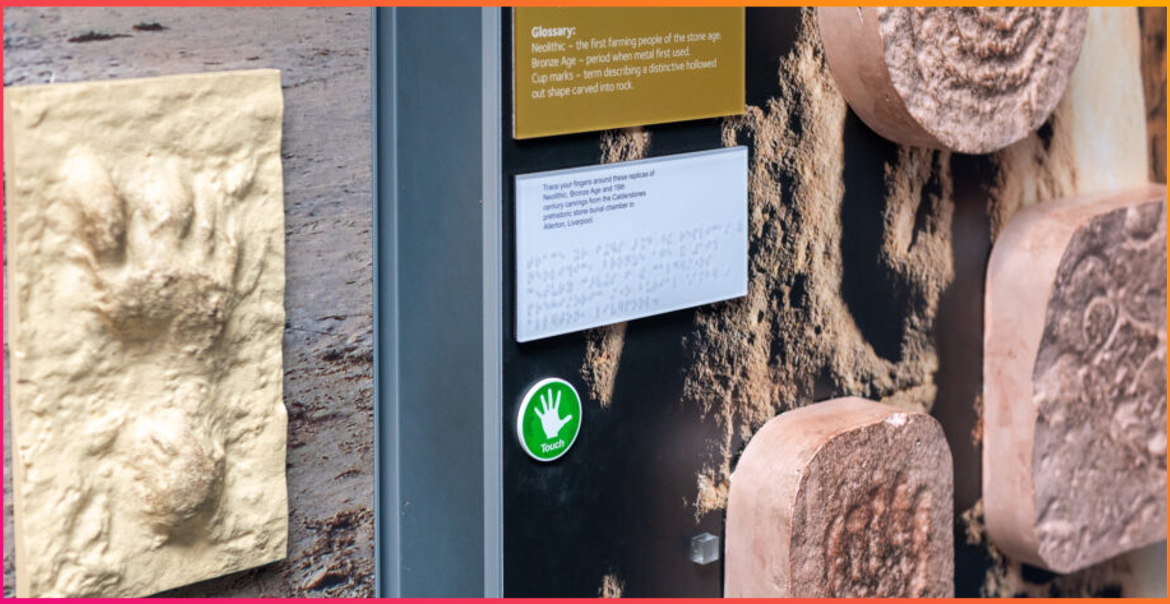A new disability history trail at Museum of Liverpool explores the fascinating stories of the city’s disability heritage.
Created through co-production with local disabled people, prioritising their ideas, needs and perspectives, their lived experiences have enriched the trail, which will enable all visitors to discover the galleries and collections from a new perspective.
The community trail has been developed as part of Curating for Change, a workforce development programme placing D/deaf, disabled and neurodivergent curators in museums across England, challenging their underrepresentation in the sector. The project has been delivered by Screen South’s Accentuate programme and funded by the National Lottery Heritage Fund, Arts Council England and Art Fund.
With disabled people constituting around 17.8% of the population of England and Wales as of 2021, and Liverpool having one of the highest proportions of people living with a disability in the region, this new trail has a crucial role in reflecting the lives and stories of the city.
Iris Sirendi, Curating for Change fellow, works with members of Liverpool’s disabled community to uncover fascinating stories that span decades of Liverpool lives. Alongside the trail is a new online hub full of collections, stories and what’s on information.
Iris said:
“Museum of Liverpool explores the people and stories of our amazing city. The stories of the local D/deaf, disabled and neurodivergent people are an important part of this, and our new trail aims to highlight and celebrate them.
“During my time at Museum of Liverpool it has been fascinating to see how elements of Liverpool’s disability history can be found in all sorts of places. From disability history narratives than span archaeology, sport, industry, activism, empowerment and self-advocacy, these are the kind of stories we are proud to highlight with this new community trail.”
Iris has also worked alongside communities to highlight already existing sensory content across Museum of Liverpool, aimed at improving the experience for visitors with sensory needs, to develop a tactile and sensory gallery trail. The gallery trail offers both an audio-described and a digital guide, adding a new layer of interpretation and enhancing the experience for visitors looking to explore the museum through touch.
Visitors can listen to or read the descriptions of many objects on display in the museum using a nearby QR code, and objects are marked with a distinct icon and label. British Sign Language interpretation is available for each object and a print copy of the trail is also available in the museum, as well as images, text and BSL interpretation for all exhibits.
The new disability history trail, created as part of Curating for Change, will be available to explore from Thursday 18 April. The community trail is also available online, with a complete audio-described guide to the trail.
To explore National Museums Liverpool’s Disability History Hub, visit: liverpoolmuseums.org.uk/disability-history-hub
Categories: 2024 | Accessible Event | Archive | Exhibition | Heritage | Liverpool | News | Participate


